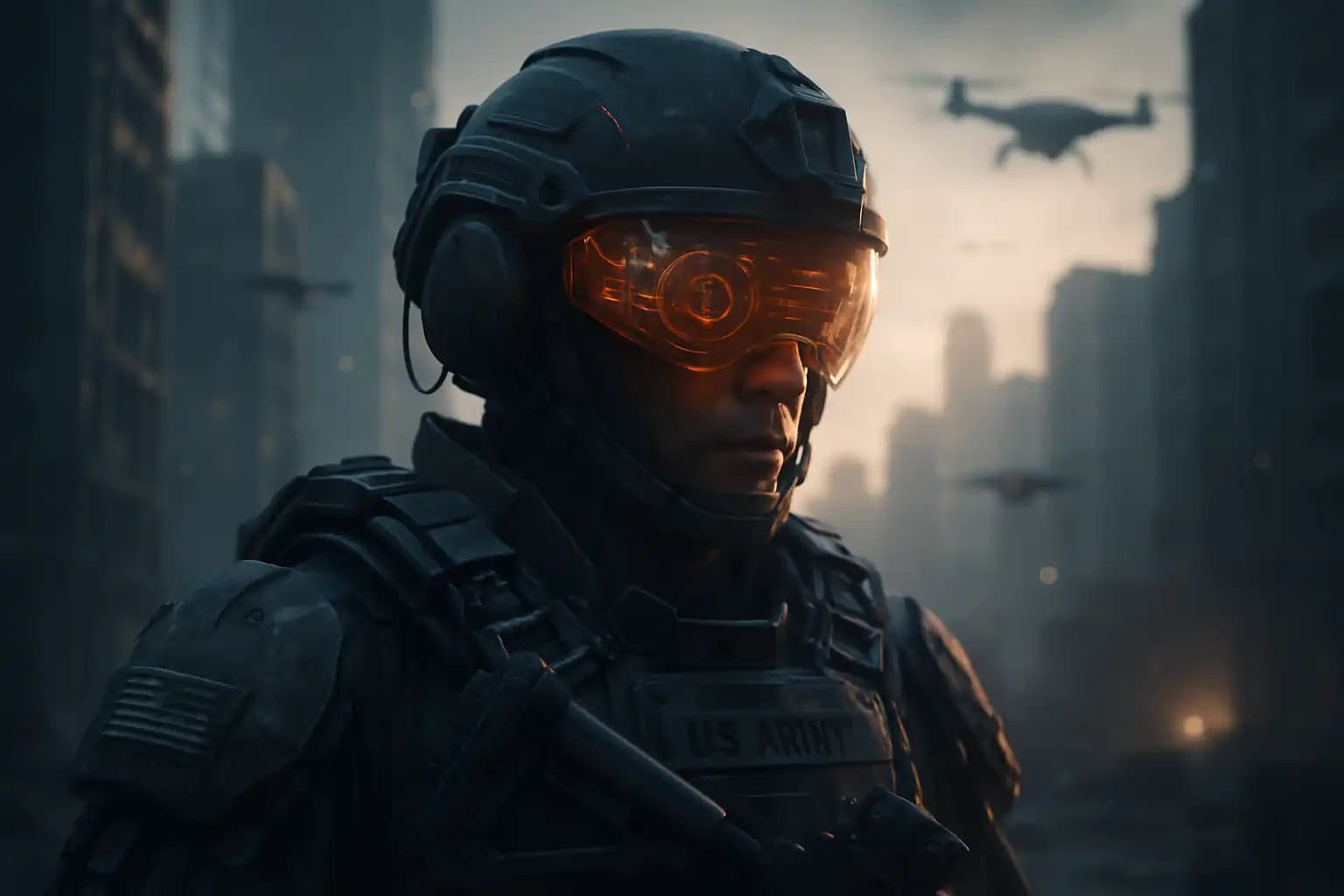The U.S. military’s leap in soldier tech is drawing attention from the defense community. The unveiling of Anduril’s EagleEye helmet, part of a $22 billion program, marks a turning point for battlefield technology and conflict itself. Anduril, founded by Palmer Luckey, has rapidly evolved from a virtual reality startup to an AI defense powerhouse, operating at Silicon Valley speed (Anduril Industries background).
What Makes EagleEye Unique? AI, Augmented Reality, and a Modular Edge
EagleEye serves as more than just protective headgear; it functions as a complete battlefield interface. In partnership with Meta, OSI, and Qualcomm, the new helmet overlays digital information directly onto a soldier’s real-world field of vision. As reported by DefenseScoop, Anduril plans to deliver about 100 EagleEye units to the U.S. Army next year, despite ongoing rapid development. Its high-resolution display features various modes for day or night, a collaborative 3D “sand table,” and blue-force tracking, which places teammates within structures or terrain—not merely as dots on a map. The hardware is lighter and better balanced than traditional night vision, thanks to Meta’s display advances that reduce user fatigue and nausea.
EagleEye is designed for modularity, enabling quick integration of new sensors and custom AR functions. This “open app store” approach aims to surpass adversarial innovations in the digitized battlespace, echoing strategies outlined in this analysis of civil-military fusion.
Anduril’s $30B Tech Ambition: Funding, Contracts, and the Silicon Valley Model
Anduril’s trajectory resembles its helmet’s HUD display—dizzying. According to FinTech Weekly, Anduril doubled its revenue to $1 billion in 2024 and soared to a $30.5 billion valuation in 2025 after new funding rounds surpassed anything in legacy defense. In February, the Pentagon reassigned the Army’s troubled $22B augmented/virtual reality contract (originally Microsoft’s IVAS project) to Anduril—an emphatic affirmation of their capabilities. This contract aims to equip over 120,000 soldiers with helmets and mixed-reality headsets within the next decade, establishing EagleEye as the flagship for next-gen military technology. The partnership with Meta, combined with solid government connections and significant private investment, reflects a new deep-tech landscape linking Big Tech, defense, and the digital economy.
Palmer Luckey and his team aim to challenge traditional primes—old giants like Lockheed Martin and Raytheon are now on alert, as nimble players like Anduril disrupt procurement cycles as thoroughly as their hardware disrupts sightlines. This innovative spirit mirrors both the psychological shifts and systemic risks discussed in this feature on elite tech psychology and the economic upheavals predicted in AI transformation coverage.
America’s Mixed Reality Arms Race—and the IVAS Legacy
The EagleEye helmet comes as the U.S. Army’s original IVAS (Integrated Visual Augmentation System)—a $22B contract for Microsoft’s Hololens-based goggles—faces redesign and competition. Recent analysis from Popular Mechanics emphasizes how AR combat headsets are essential for navigation, threat detection, targeting, and coordination in complex environments. Although IVAS encountered early issues (soldier nausea, limited field use), upgrades and the Army’s transfer of the project to Anduril indicate a shift in both trust and technological direction. Multiple units are anticipated for deployment and rigorous testing through 2025, bridging legacy vision aids with a new digitally connected ethos.
This arms race is tangible; it redefines who fights and how battles unfold. It brings scrutiny—if the line between soldier and super-soldier lies in code, who controls it? Such inquiries resonate within modern military thought and the boundary-pushing science explored in AI and military physics reporting and cross-disciplinary survival scenarios like this government testimony feature.
AI, Ethics, and the Soldier of the Future
Beneath the helmet’s advanced tech lies a maze of social, psychological, and ethical dilemmas. AI-powered tools like EagleEye blur human agency and algorithmic influence. As AI sentience analysis raises accountability stakes in warfare, the potential for “superhuman” operations introduces new vulnerabilities: hacking, system failures, and the risk of rapid deployment outpacing battlefield comprehension. Critics and strategists question who determines the information soldiers access and what remains concealed, echoing debates in the speculative fiction examined in PKD’s simulation theory feature.
The rollout of EagleEye marks the onset of this intelligence arms race. As the super-soldier era begins, the lessons and challenges of this change will be assessed alongside human limitations and technological potential. To follow the evolution of AI, AR, and defense giants in America’s high-stakes future, visit Unexplained.co.




